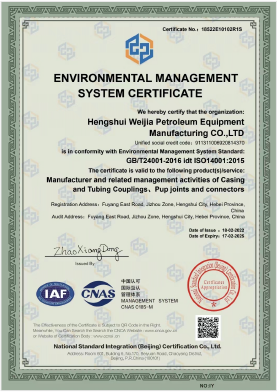- Afrikaans
- Albanian
- Amharic
- Arabic
- Armenian
- Azerbaijani
- Basque
- Belarusian
- Bengali
- Bosnian
- Bulgarian
- Catalan
- Cebuano
- Corsican
- Croatian
- Czech
- Danish
- Dutch
- English
- Esperanto
- Estonian
- Finnish
- French
- Frisian
- Galician
- Georgian
- German
- Greek
- Gujarati
- Haitian Creole
- hausa
- hawaiian
- Hebrew
- Hindi
- Miao
- Hungarian
- Icelandic
- igbo
- Indonesian
- irish
- Italian
- Japanese
- Javanese
- Kannada
- kazakh
- Khmer
- Rwandese
- Korean
- Kurdish
- Kyrgyz
- Lao
- Latin
- Latvian
- Lithuanian
- Luxembourgish
- Macedonian
- Malgashi
- Malay
- Malayalam
- Maltese
- Maori
- Marathi
- Mongolian
- Myanmar
- Nepali
- Norwegian
- Norwegian
- Occitan
- Pashto
- Persian
- Polish
- Portuguese
- Punjabi
- Romanian
- Russian
- Samoan
- Scottish Gaelic
- Serbian
- Sesotho
- Shona
- Sindhi
- Sinhala
- Slovak
- Slovenian
- Somali
- Spanish
- Sundanese
- Swahili
- Swedish
- Tagalog
- Tajik
- Tamil
- Tatar
- Telugu
- Thai
- Turkish
- Turkmen
- Ukrainian
- Urdu
- Uighur
- Uzbek
- Vietnamese
- Welsh
- Bantu
- Yiddish
- Yoruba
- Zulu
Efficient Pipe Threading Solutions for Professional Plumbing and Construction Applications
The Pipe Threader An Essential Tool for Plumbing and Beyond
In the world of plumbing and various industrial applications, the need for creating threaded pipes and fittings is paramount. The tool that serves this purpose is known as the pipe threader. Whether you are a seasoned plumber, a DIY enthusiast, or involved in construction and engineering, understanding the importance and functionality of a pipe threader is essential.
What is a Pipe Threader?
A pipe threader is a specialized tool used to cut threads onto the end of a pipe. These threads are crucial for creating a tight seal when connecting two pipes or attaching fittings. By ensuring that pipes are threaded properly, a pipe threader helps to prevent leaks and maintain the integrity of plumbing systems. Various types of pipe threaders exist, including manual, electric, and hydraulic models, each suited for different applications and pipe sizes.
Types of Pipe Threaders
1. Manual Pipe Threaders Typically used for smaller jobs, manual pipe threaders are cost-effective and easy to operate. They consist of a set of dies and a handle, allowing users to cut threads by turning the handle in a clockwise direction. Manual threaders are portable and ideal for DIY projects or limited plumbing tasks where electric options might not be practical.
2. Electric Pipe Threaders For more significant and commercial projects, electric pipe threaders are more efficient. They offer speed and precision, automating the threading process and reducing manual labor. These machines are particularly beneficial when working with larger pipes requiring extensive threading.
pipe threader

3. Hydraulic Pipe Threaders Hydraulic models are even more powerful, designed for heavy-duty applications in construction and industrial environments. They can handle larger diameters and thick-walled pipes, making them indispensable for large-scale plumbing installations.
The Benefits of Using a Pipe Threader
One of the most significant benefits of using a pipe threader is the tight, reliable seal it creates. Properly threaded pipes ensure that connections can withstand pressure, reducing the risks of leaks that could lead to significant water damage or higher utility bills. Additionally, threaded connections are easier to disassemble and service than welded or soldered joints, making maintenance simpler.
Another advantage is the increased speed of installation. Using a pipe threader can significantly cut down on labor time required to prepare pipes for connections. This efficiency can lead to reduced project costs and quicker turnaround times.
Conclusion
In conclusion, the pipe threader is an essential tool in the plumbing and construction industries, facilitating secure and efficient pipe connections. Its variety of forms catering to different needs and its ability to create durable, leak-proof joints underscore its importance. Whether you are a professional or engaging in a home improvement project, investing in a good-quality pipe threader can make a significant difference in the quality of your work. Understanding the types of pipe threaders available and their applications will empower you to choose the right tool for your needs, ensuring that your plumbing tasks are executed smoothly and effectively.
-
Tubing Pup Joints: Essential Components for Oil and Gas OperationsNewsJul.10,2025
-
Pup Joints: Essential Components for Reliable Drilling OperationsNewsJul.10,2025
-
Pipe Couplings: Connecting Your World EfficientlyNewsJul.10,2025
-
Mastering Oilfield Operations with Quality Tubing and CasingNewsJul.10,2025
-
High-Quality Casing Couplings for Every NeedNewsJul.10,2025
-
Boost Your Drilling Efficiency with Premium Crossover Tools & Seating NipplesNewsJul.10,2025







